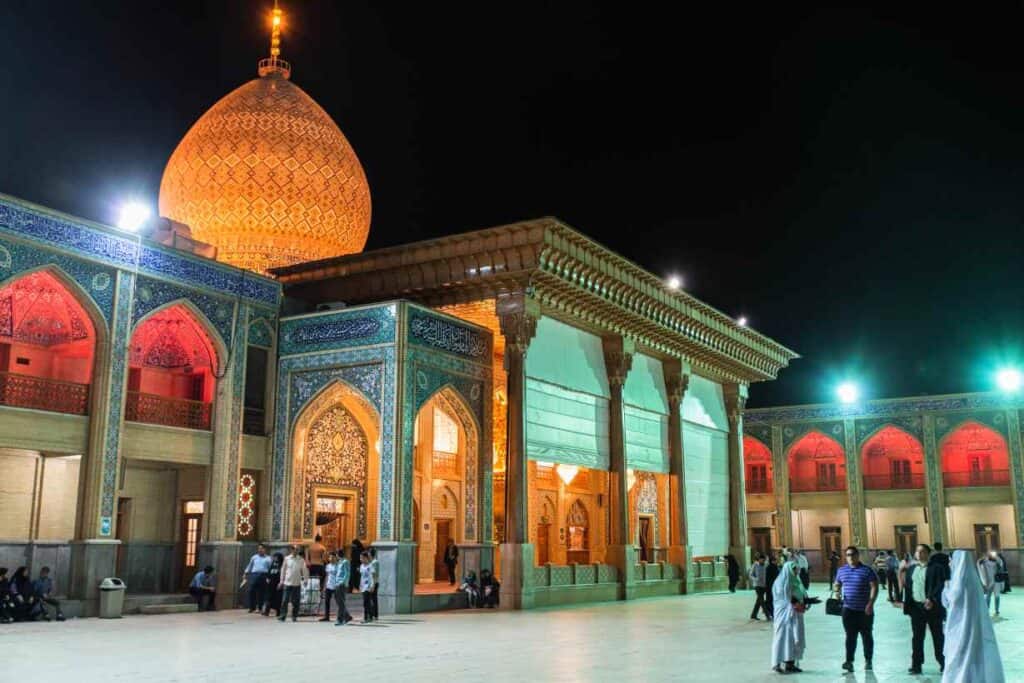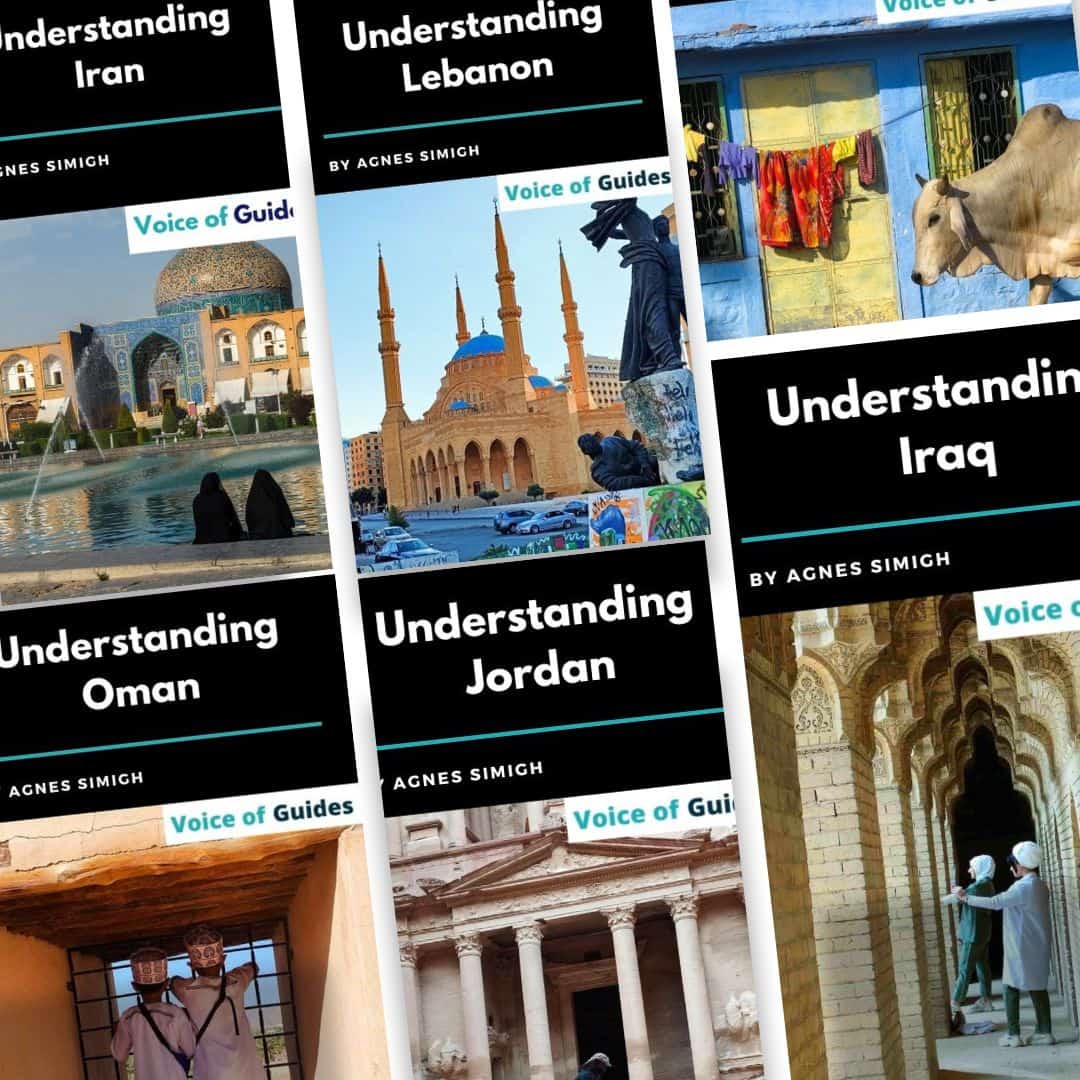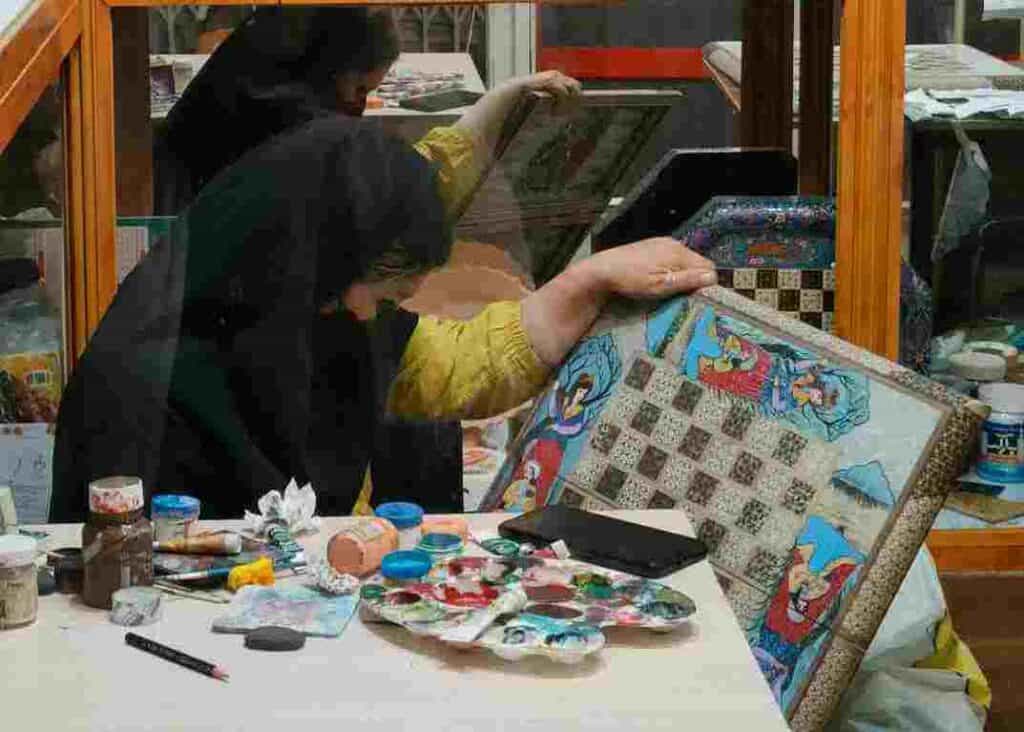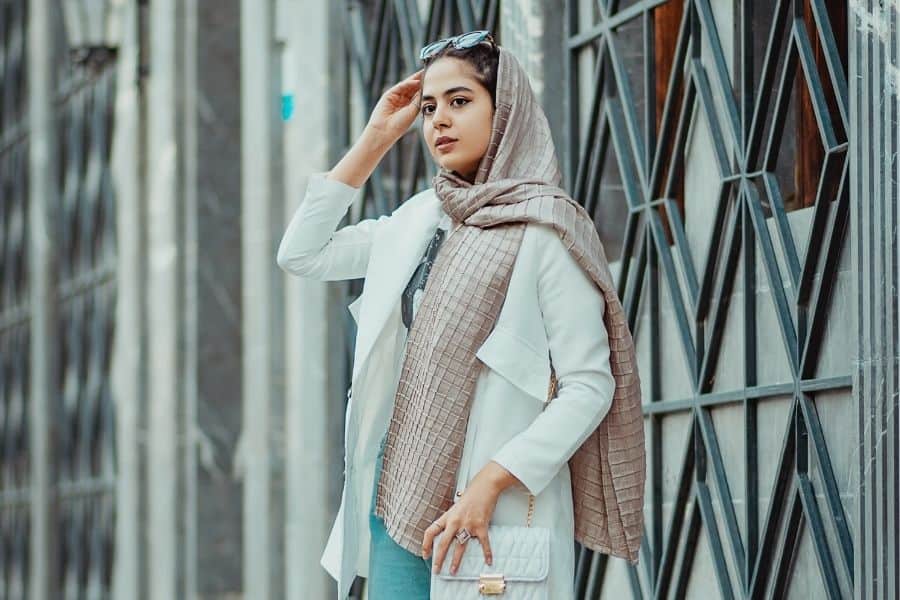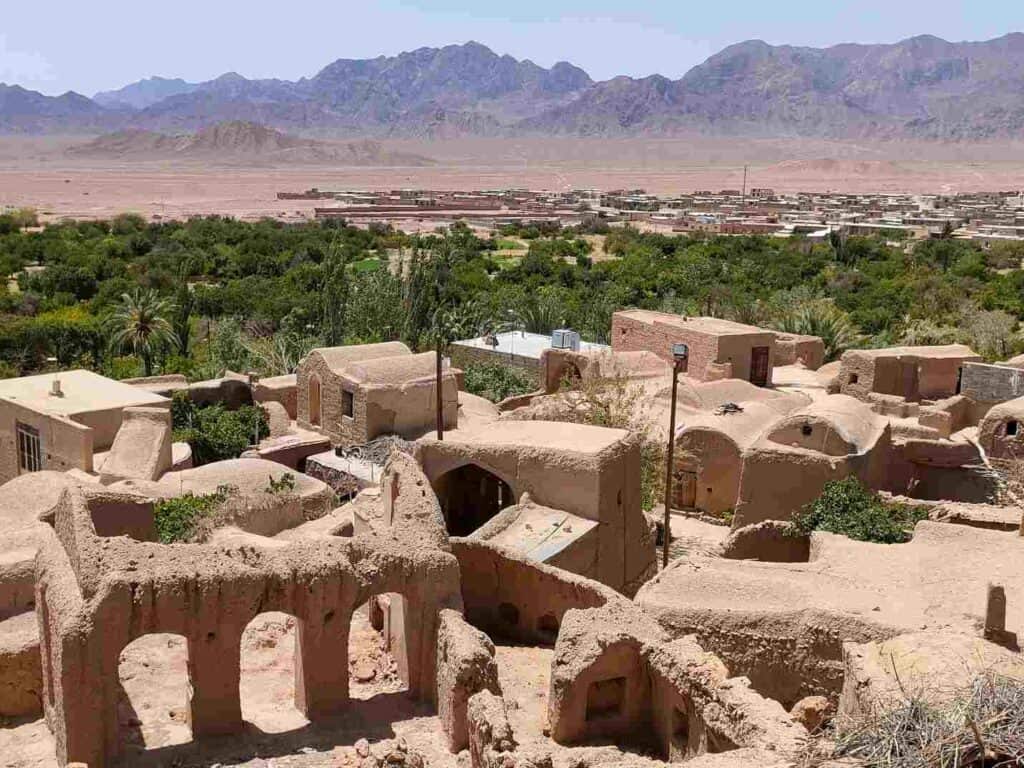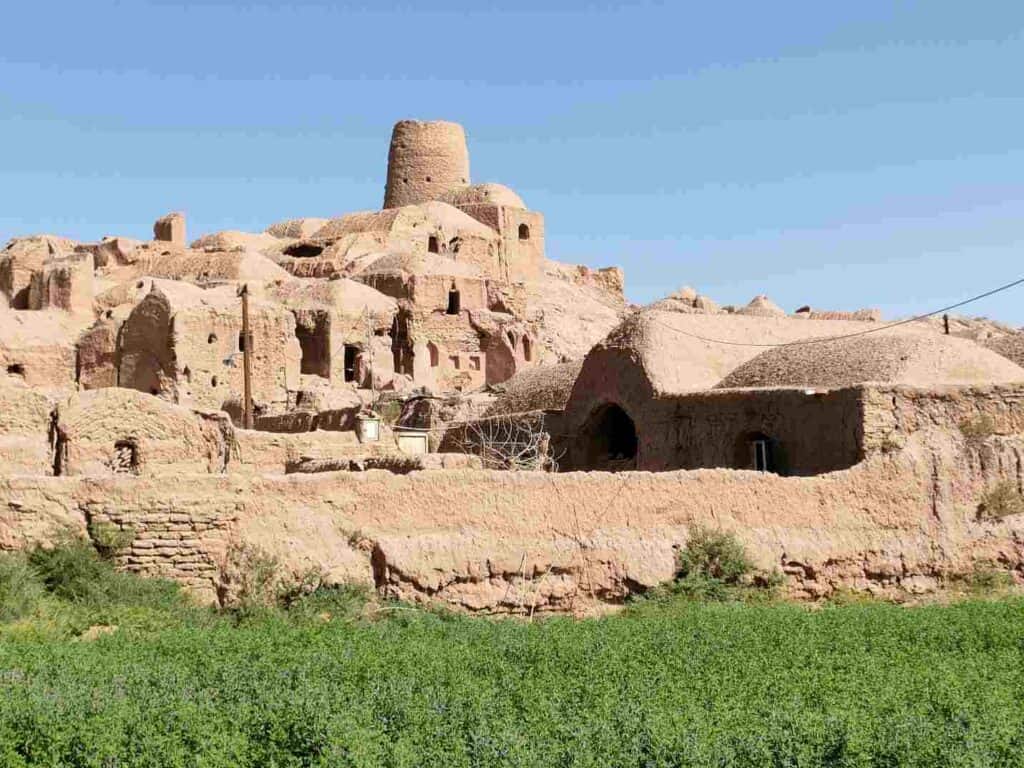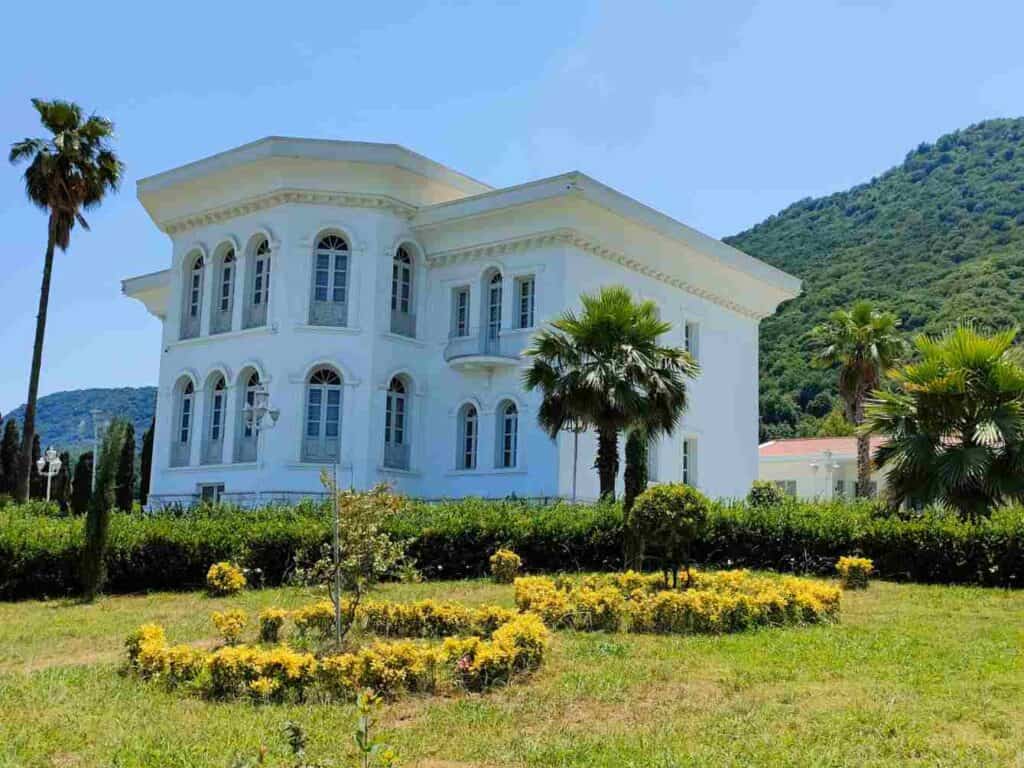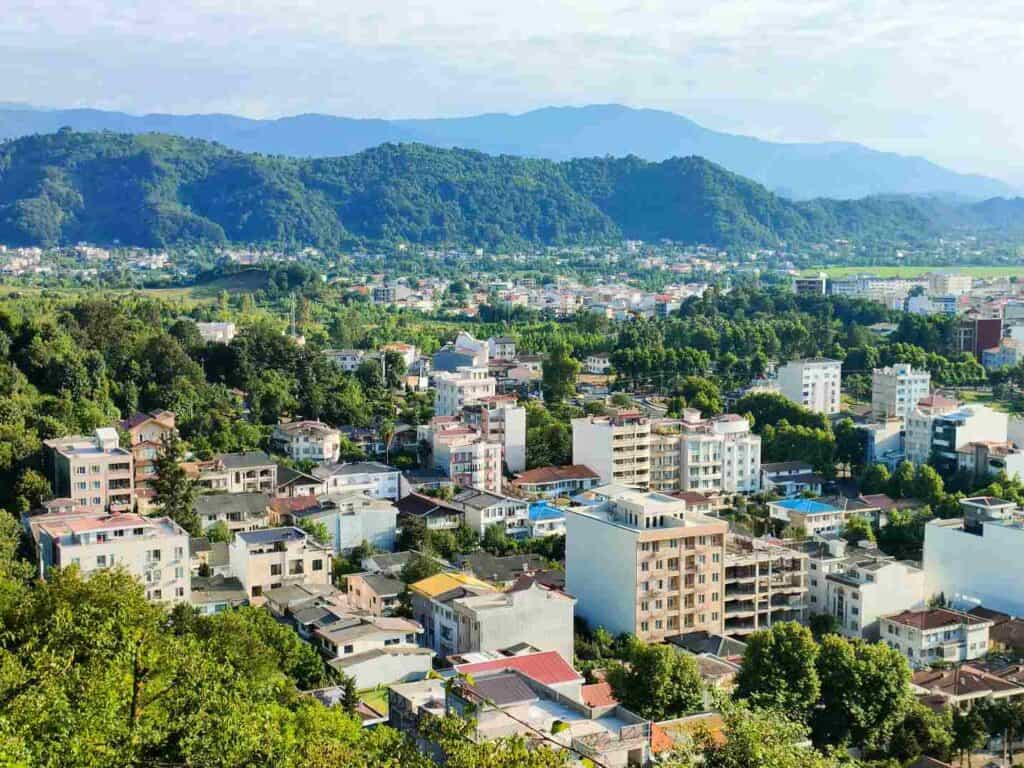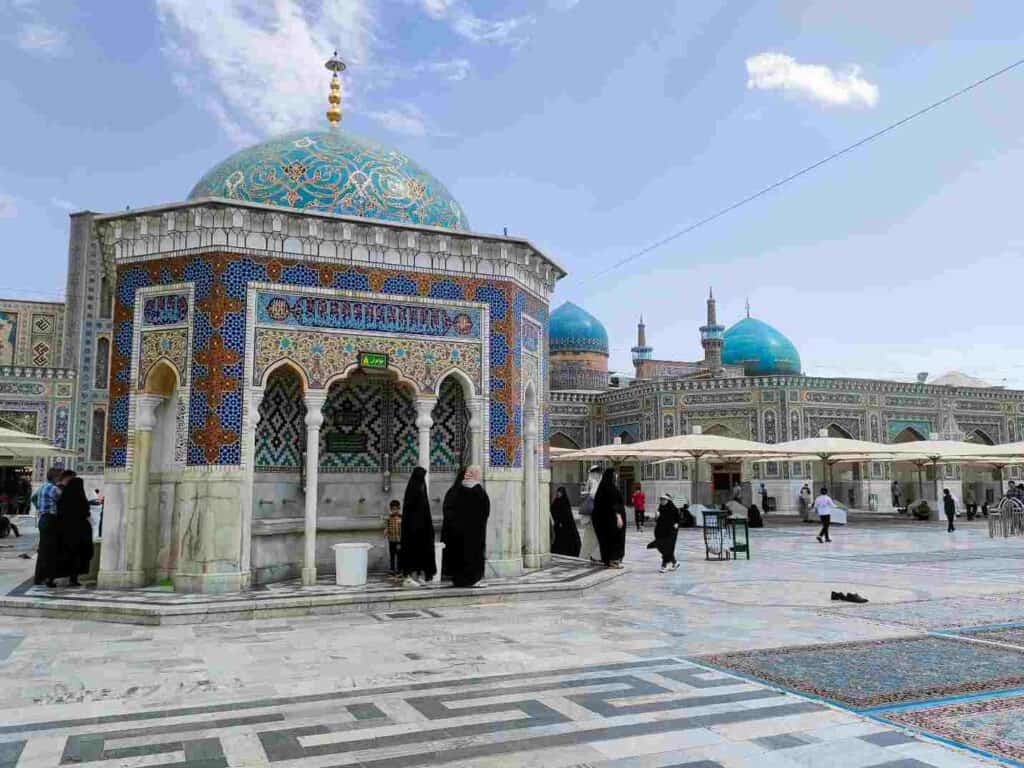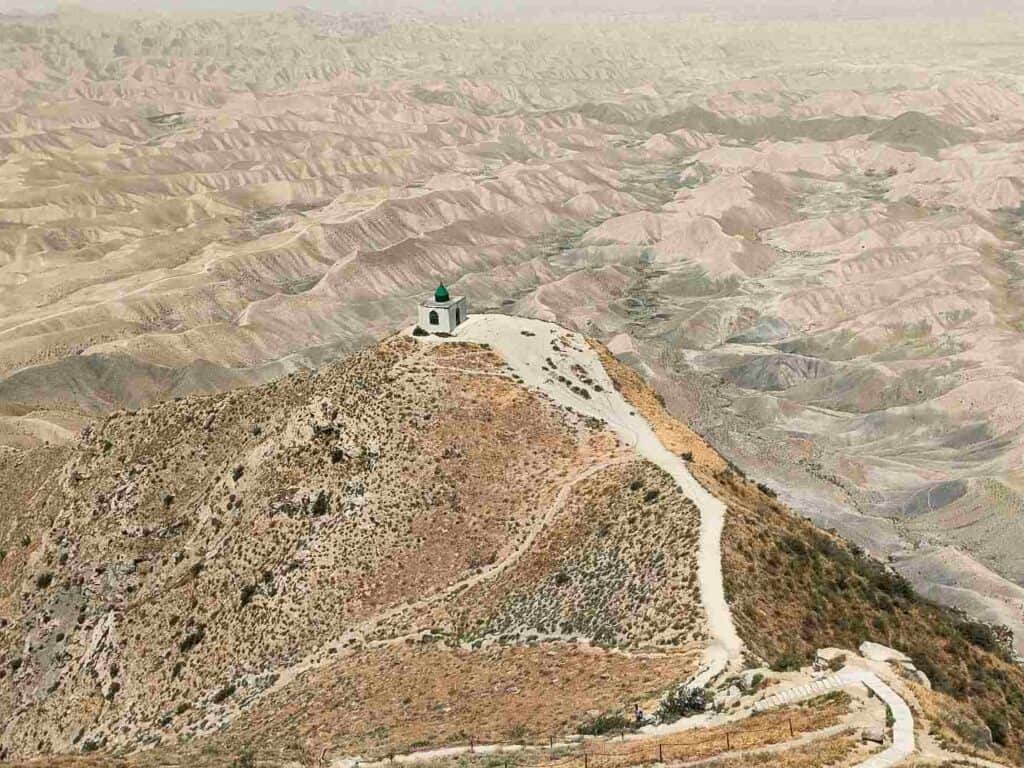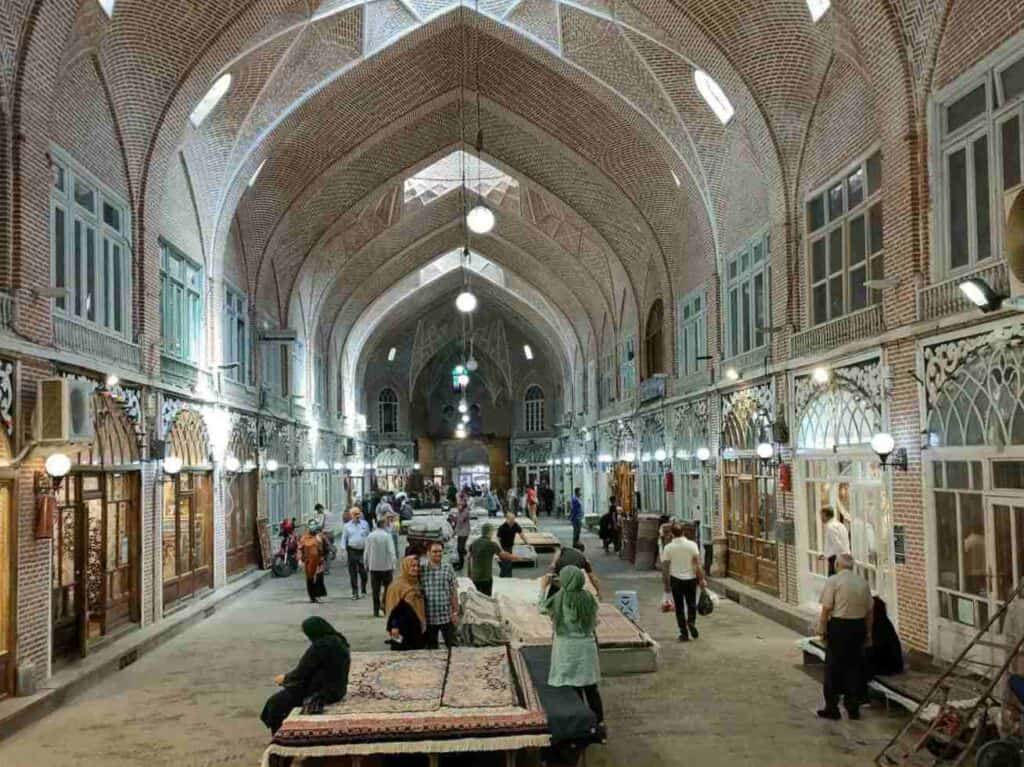This article may contain affiliate / compensated links. For full information, please see our disclaimer here.
Shiraz, the city of poets, wine, gardens, and the center of Persian culture, is another highlight during your first visit to Iran. It is impossible not to love Shiraz. Here you find a complete guide suggested by me and my friend, Ramin, a local guide about the best places to visit and things to do in Shiraz. There are several local tours you can take in Shiraz. You can even spend one day with the nomads in the mountains who still pursue this traditional lifestyle.
What you should know about Shiraz
- What you should know about Shiraz
- Where is Shiraz?
- How to go from Yazd or Kerman to Shiraz?
- How to get around in Shiraz?
- What are the best places to see and things to do in Shiraz in one day?
- Recommended daily tours from Shiraz
- Recommended hotels in Shiraz
- Recommended Restaurants in Shiraz
- How to plan your trip to Iran
Shiraz is the 5th biggest city with a population of approximately 1.6 million, in the southwestern part of Iran at an altitude of 1500 meters. Shiraz is a green and clean city.
You may immediately associate the city with the Shiraz wine. Although winegrowing has an 1800-year-old tradition in Shiraz, it is now forbidden to drink alcohol in the Islamic Republic of Iran. The “Shiraz wine” has nothing to do with the Iranian city. Only Christians can produce and consume alcohol as part of their religious activities. Interestingly, before the Islamic Revolution of 1979, there were hundreds of wineries in Shiraz. The wine was one of the famous products of Shiraz.
The Bahai religion, which acknowledges all religions as equal, was born in Shiraz in the 19th century and has followers in almost every country.
Shiraz has long been the center of Persian culture and literature. Two famous Persian writers and philosophers come from Shiraz: Hafez and Saadi.
Shiraz was the capital of the Zand dynasty between 1750 –1781 and flourished during the reign of Karim Khan. He selected Shiraz as his capital and entirely changed the appearance of the city by building a royal fort, a mosque, and one of the most amazing bazaars in Iran. When the Qajar dynasty ended the short, 40-year-rule of the Zand dynasty, they moved the capital to Tehran. But Shiraz remained a principal commercial center.
Shiraz is one of the best shopping hubs in the Middle East with several modern shopping malls and bazaars.
The Persian Gulf Complex is the second biggest in Iran after the Iran Mall in Tehran. It has a hotel, indoor and outdoor fun parks, cinemas and 2500 shops. The Mall is an ½-hour’s drive from Shiraz.
Shiraz gained attention during the rule of the Pahlavis. The Shah started the excavations of Persepolis and renovated the monuments. The large-scale modernization attracted many job seekers, and the population grew rapidly.
Where is Shiraz?
Shiraz is in the southern part of Iran, 900 kilometers south of Tehran.
How to go from Yazd or Kerman to Shiraz?
If you follow the most popular itinerary for your first visit to Iran, you probably come to Shiraz from Yazd or Kerman.
There is no train between Yazd/Kerman to Shiraz, but you can take a bus (from Kerman 570km, 8 hours 45 minutes, 5-7 Euro, from Yazd 440km, 6 ½ hours, 6 Euro) that departs several times a day.
Book your online ticket here: https://iran.1stquest.com/bus
Pin it for later!
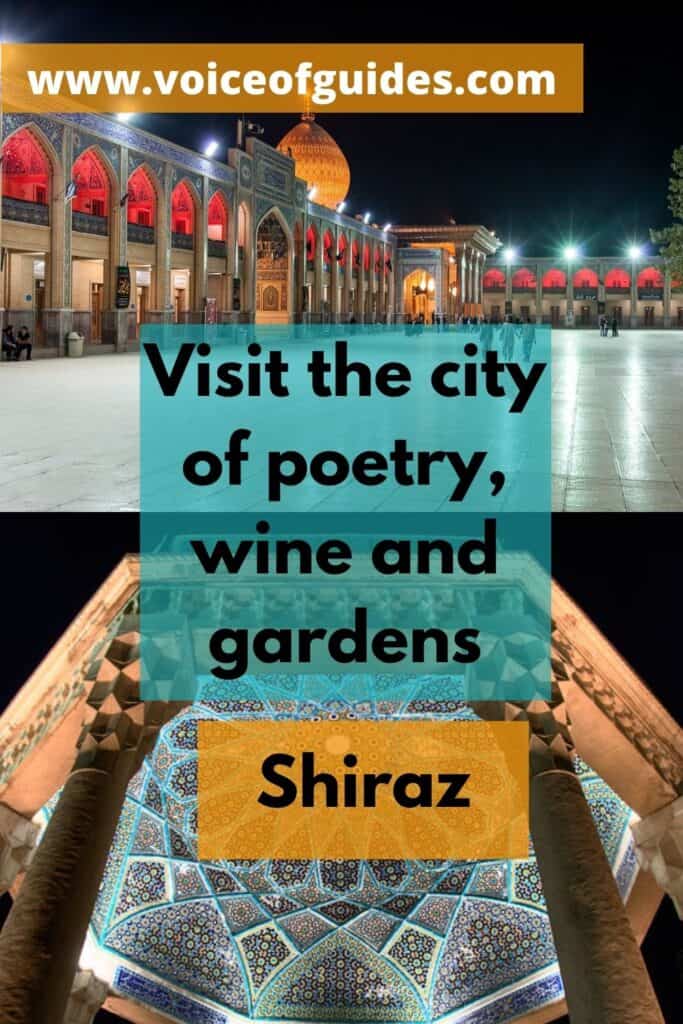
How to get around in Shiraz?
Some monuments are within walking distance (Karim Khan Citadel, Vakil Bazaar, Vakil mosque, Pink mosque, Narenjestan garden). Others (Eram garden, Tomb of Hafez and Saadi, Atique mosque, Imamzadeh-ye Ali Ebn-e Hamze, Quran gate) are a few kilometers away.
Taxi: The easiest way to get around in Shiraz is to take a cab. It is cheap since the Iranian Rial lost a lot in value due to the economic sanctions.
Metro: Shiraz opened its metro line with 20 stations in 2014 that can also be useful. A one-way ticket costs 10,000 IRR. Check the metro map of Shiraz here:
https://www.metrolinemap.com/metro/shiraz/
What are the best places to see and things to do in Shiraz in one day?
Entrance fees: The below-listed entrance fees are from 2019 (before COVID times). By normal reopening, they are expected to change but the exact prices are not known for the moment.
Because of economic sanctions and the pandemic, prices of basic facilities and products tripled or quadrupled. It means that the entrance fees can significantly increase too.
1. The Quran Gate
Out of the six gates, it is the only one that remained intact in Shiraz. Earlier, they kept two samples of the holy Quran in a small room above the impressive arc. Travelers who left the city all passed under the Gate and the Quran to ensure that they have a safe trip without any misfortune. The arc-shaped impressive structure is the first thing you see when entering Shiraz. Verses of the Quran appear on the outer surface.
In 1937 they moved the Quran to the Pars Museum in Shiraz, where they are until today.
Right next to the gate passes the highway to Isfahan and Tehran.
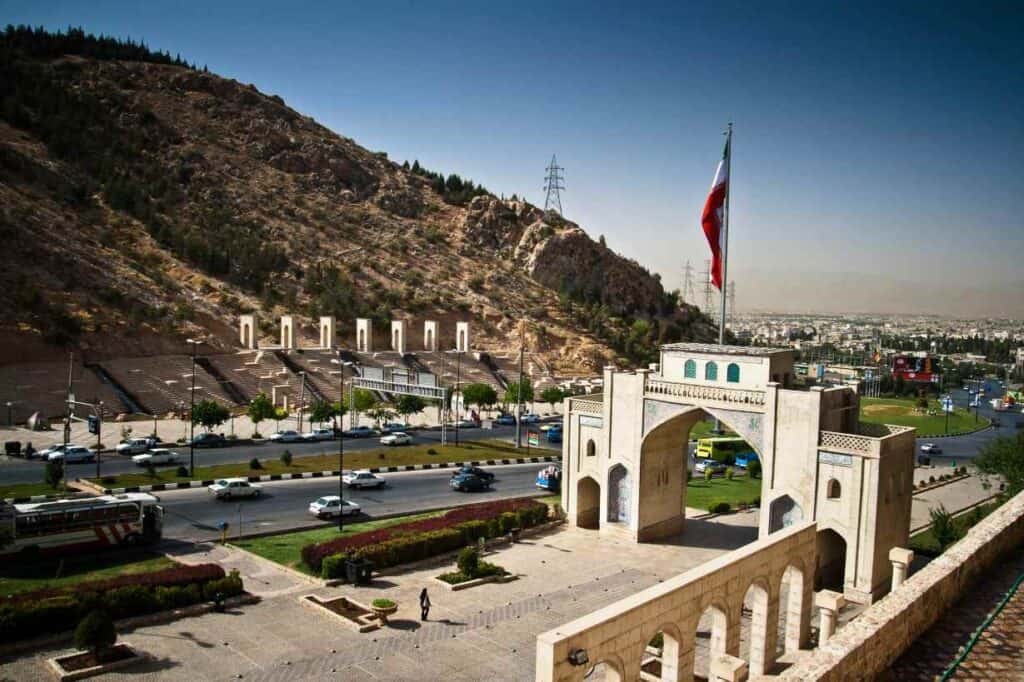
Above the Quran gate built against the rock towers the Grand Hotel Shiraz with a ship-like facade. It is hard to miss the striking building when you enter Shiraz. A luxurious 5-star hotel with the biggest revolving restaurant in Iran offers a stunning view of the city. It has an Italian and Persian restaurant as well as spacious and attractive rooms. The hotel offers many amenities, including a women-only sports complex with a pool and a spa.
Next to the gate on the hillside stands the tomb complex of Khwaju Kermani, a famous Persian poet and Sufi Mystic from the 13th century. It is nice to walk around or take a seat in the adjacent garden.
Tip: Come back to the Quran gate in the evening to see it in colorful lights.
Tip: On the opposite side of the main road, after a 30-minute climb, you get to a viewpoint at the top. It is popular among locals to hike up there.
2. The tomb of Hafez, the greatest Persian poet of all time, what everybody must visit in Shiraz
Hafez, one of the greatest Persian poets
It is for sure no exaggeration to claim that no European poet enjoys such popularity in his own country as the 14th-century poet Hafez in Iran. Hafez is not his original name. It is just a pen name that means “The memorizer”. He earned this title by learning the Quran by heart, and it became the pseudonym of the most famous Persian poet. Almost every Persian home has a sample of his book of poetry, the Divan of Hafez. It is not just a decoration on the bookshelf as many people learn his poems word by word, often refer to or quote from it.
It is less-known in the West that Hafez inspired the “West-Eastern Divan” of Goethe, who even translated the Divan of Hafez.
Hafez is a lyrical poet highly influenced by the mysticism of the Sufi religion. He lived in Shiraz, loved wine very much, and wrote openly and honestly about love. His fame spread like wildfire thanks to his poems. No Persian poet fascinated his readers that much before. But most of his contemporaries had difficulties in understanding his works. We must admit that they are not easy to interpret even today. Many say that the individual verses seem to be quite incoherent sometimes, but in the end, they suddenly all start to make sense.
When the feared Turko-Mongol ruler Amir Timur arrived in Shiraz, everyone trembled, although his visit proved friendly. As it turned out, Timur had not just heard about Hafez but was also able to quote his poems. Unlike the other great Persian poet, Saadi, Hafez was not a traveler. There is a well-known story of how Hafez provoked the anger of Amir Timur with the following verses.
„For the black mole on her cheek
I would give the cities of Samarkand and Bukhara”.
At that time, Samarkand in Central Asia was the capital of the Timurid Empire and Bukhara was its most beautiful city.
Amir Timur summoned and reproached Hafez for giving up the cities of Samarkand and Bukhara, for which he subjugated much of the globe for the sake of a Turkmen woman.
The tomb of Hafez
The tomb consists of two pavilions. One houses his grave, and the other one is a memorial hall. The tomb you see today was built in 1935 by a French architect, André Godard. Eight columns support the pavilion, while the brass dome carries the form of a dervish hat. The interior has a stunning blue and green mosaic decoration. The dome’s shape refers to the fact that Hafiz was a famous follower of the Sufi religion. It is a mystical branch of Islam, and the number of its followers is steadily growing in Iran today.
A section of his poem is engraved on his alabaster sarcophagus. At any time of the day, there are several people at his grave. They sit on the stairs around with a volume in their hands, reading or singing from it. Especially on the Day of Hafez (12th October), many people come for a visit. The smell of the surrounding orange trees, rosewood, and flowers and their reflections in the surrounding pools further enhance the mysterious and unique atmosphere.
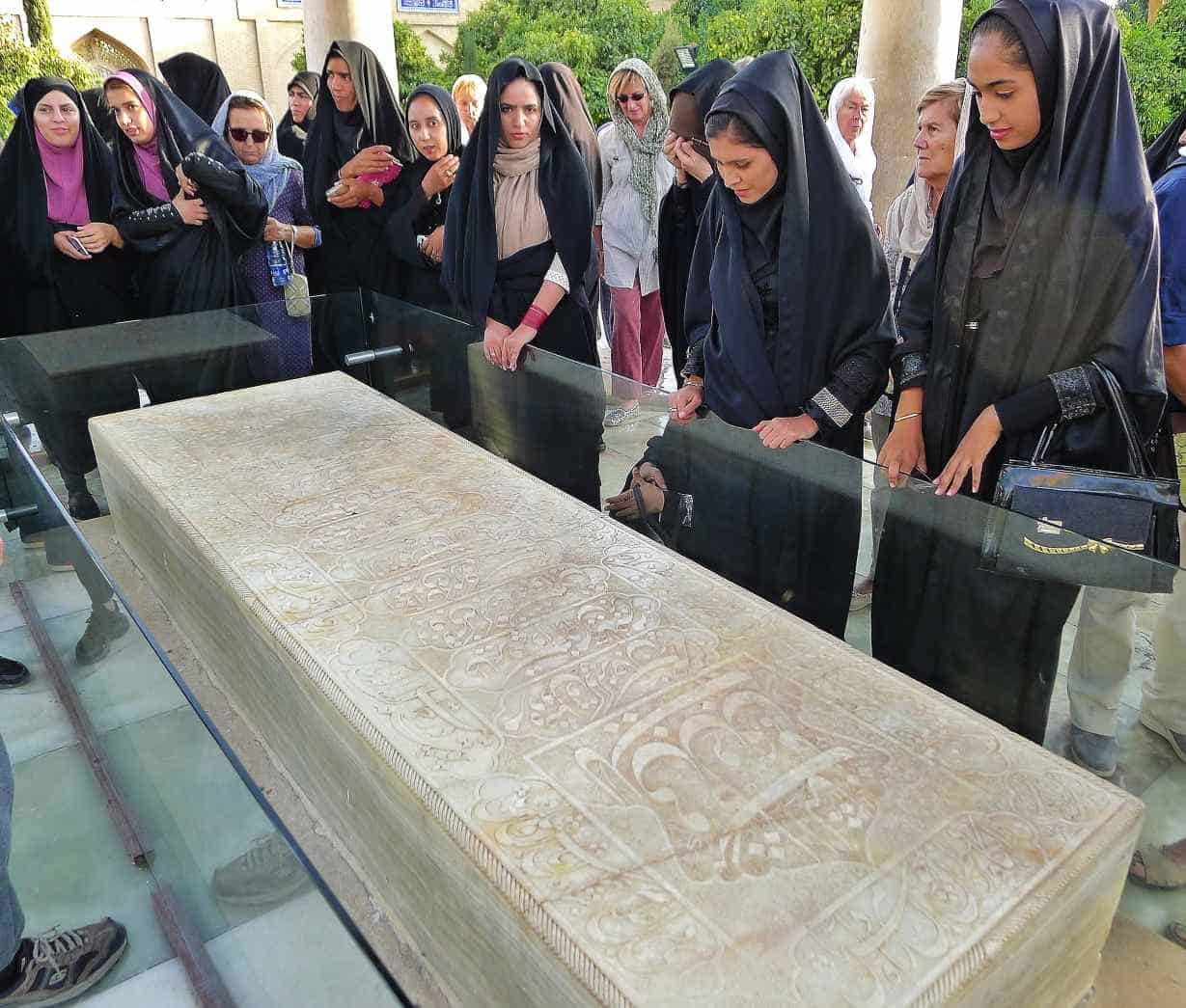
On major holidays such as the Persian New Year (Nowruz) or the Yalda, the longest night of the year (21st December), it is a tradition to foretell the future from the Divan. This ritual, which is still popular today, is called “Fal-e Hafez,” meaning “Prophecy from Hafez”. People turn to him for guidance when they become uncertain and try to get answers by opening his book on a random page. The first section they catch sight of on this page will answer their questions.
Merchants sell Hafez quotes outside the gate that predict your future. Just pick a random paper and check the quotation on it!
Opening hours: 08:00 – 22:00
Entrance fee: 200000 Rials
Location: Walking distance from the Quran Gate
Tip: The best time to come here is around sunset when it is even more mystical. Iranians of all generations recite Hafez’s poems or try to predict the future. They encircle the tomb of a writer not forgotten after centuries.
3. The tomb of Saadi
The tomb of Saadi stands in the center of a garden of cypresses. It is an immense plain building that combines modern and traditional architecture. In contrast to Hafez, Saadi was a curious traveler. He visited the Arab world and Central Asia, and after 20 years of traveling, he returned to Shiraz.
On the 21st April, several people come to honor Saadi, the other celebrated Persian poet.
In the small adjacent shop, you can buy the books of Saadi, the Boostan (orange garden) and Golestan (Rose garden). Visitors drop coins in the small pool to have their wishes fulfilled. Quotes from the poems of Saadi decorate the whole complex.
There are several other graves near the tomb that belong to historical figures, artists, and poets.
Opening hours: 08:00 – 20:00
Entrance fee: 200,000 Rials
4. Visit the Eram Garden, UNESCO World Heritage
The 18th -century Eram Garden was named after one of the four gardens of paradise as described in the Quran. Quotes from famous Persian poets like Hafiz and Saadi appear on the building, while flowers, canals, oranges, and cypresses adorn the garden. At the same time, it is the Botanical Garden of the University of Shiraz.
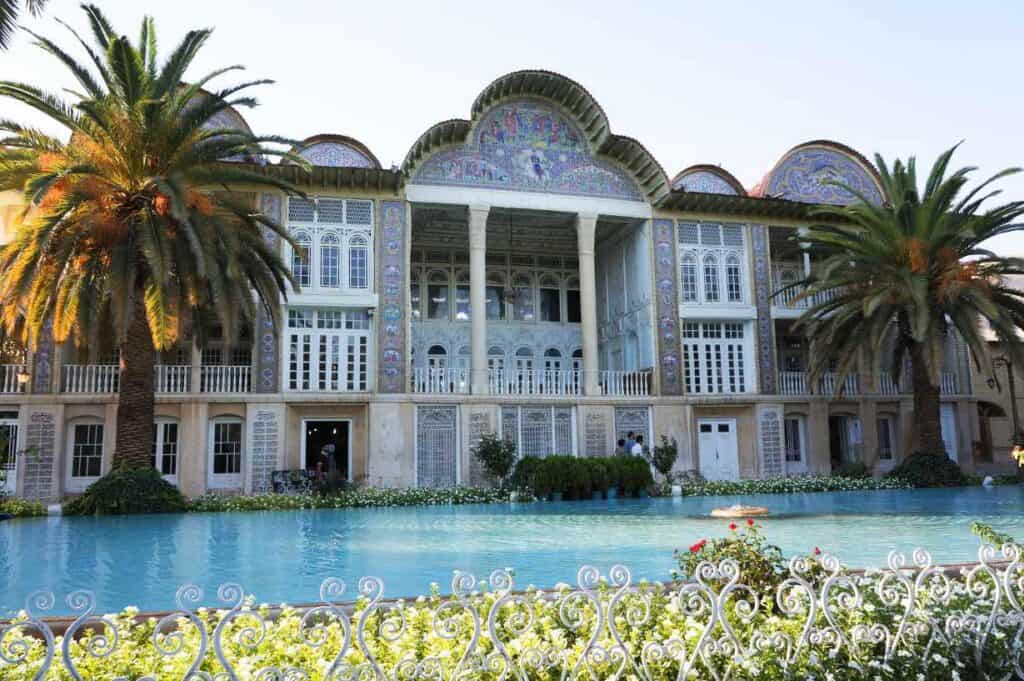
Opening hours: 08:00 – 17:00
Entrance fee: 200,000 Rials
5. Visit the Narenjestan Garden
Narenjestan Garden is a hundreds-of-years old Persian garden and a prestigious royal residence. Traditional Persian architectural elements mark the interior of the house. The central building is entirely decorated with wood carvings, mirrors, tiles, frescoes, and reliefs so that not a single cm² remains undecorated. Prominent members of the Qajar dynasty and nobles held meetings here in the 19th century, but the ordinary people could also arrange their administrative tasks here.
Opening hours: 08:00 21:00
Entrance fee: 200000 Rials
6. The “Pink Mosque” in Shiraz – A strong incentive itself to travel to Iran
But where is this mosque? – I had to ask somebody after I was wandering around with my guidebook. It said that the most famous monument of Shiraz, the Pink Mosque, should be around here. But I could not find it. It is because you would never assume that the fairy tale interior displayed on thousands of photos nestles behind such a modest facade.
The Nasir-Al-Mulk mosque was named after Mirza Hasan Ali Nasir al-Mulk, a Qajar ruler (Qajar dynasty ruled Persia between 1789-1925), who ordered to build the mosque. They completed it by 1888 after 12 years of construction. This mosque is unique because of its colorful stained-glass windows and the extensive use of rose-color tiles with floral motives to the widely used geometry-based turquoise tilework and minarets of other mosques.
The morning sun rays pass through the colored windows and project hues of lights on the exquisitely carved columns and carpets. It turns the whole winter prayer hall into a magical place. The overwhelmingly rose tile color and the magnificent light effects earned the mosque its name, the “Pink Mosque”, “Mosque of Colors”, the “Rainbow Mosque”, or the “Kaleidoscope Mosque”. The vivid multicolor lights envelop the whole interior in rainbow colors and create a kind of heavenly atmosphere.
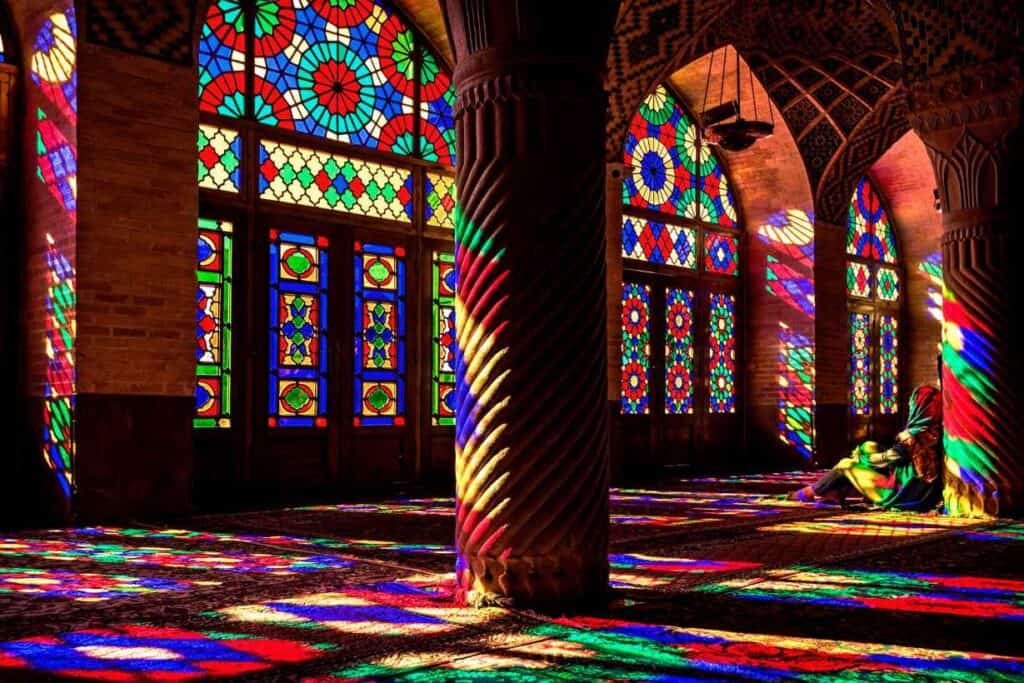
Taking a seat on the tightly woven soft Persian carpet makes even non-religious people feel somehow unique.
In front of the mihrab (the niche in the wall that shows the direction of Mecca), the floor is lower than in the rest of the building. Here, the imam kneels and prays in this deeper position to emphasize his inferiority to God.Itis also interesting to see small pieces of clay (called “turbah”) around the mihrab, which is compulsory for the Shias to put their forehead on when prostrating in the prayer. According to the Twelver school of Shia Islam, the best thing to prostrate on is the soil from the grave of Imam Hussain, located in the holy place of Karbala in present-day Iraq. In the lack of soil, they can replace it with any other alternative natural material (stone, molded clay) is accepted, which thus symbolizes earth. It is how the Prophet prayed as well.
A big rectangular pool occupies the central courtyard, with two porches on each side. They are decorated with typical Islamic architectural elements, the Muqarnas that symbolizes the creation of the Universe by God.
A museum also belongs to the complex with a Cow Well, where cows were used to raise water from the underground qanat, (water canal).
Tip: To witness the miracle of colors, you should arrive in the early morning hours.
Opening hours: 07:00 17:00
Entrance fee: 300,000 Rials
7. Shah Cheragh Mosque
The Shah Cheragh is a mosque and a mausoleum of the brother of the 8th Shia Imam. It means the “King of the Light”. It got the name after the legend that an Ayatollah in ancient times spotted a light from far. When he approached the grave to find out what emitted the strange light, he found a grave. An inscription on the ring of the corpse made it clear that it belonged to the son of the 7th imam. From the 14th century, it has been the number one pilgrimage site in Shiraz.
An Imamzadeh is the shrine of the family members of Shiite Imams who are highly respected in the Shia branch of Islam. They are important pilgrimage sites in Iran. Shias believe that they have healing effects and can make miracles and wash away their sins.
Due to a devastating earthquake, not much was left from the complex. Only a gold-inscribed Quran that is in the Pars Museum in Shiraz now.
The mausoleum is decorated with turquoise, blue and yellow Persian tiles, flower motives and quotes from the Quran.
The hundreds of thousands of mirrors give the impression that you enter a diamond chamber. The 3-meter-high silver tomb stands in the center of the mirror room.
There are several holy shrines (Imamzadeh) in Iran, but this is one of the most decorative ones.
Opening hours: open 24 hours
Entrance fee: Free
8. Vakil bazaar and mosque
Karim Khan, the ruler of the Zand dynasty, constructed them as part of his large-scale project to convert Shiraz into a capital. The mosque has 48 unique spiral columns. It is its simplicity that makes the bazaar impressive. The arched alleys and courtyards were made of plain brick and limestone. But the Persian architects could make wonders even from the simplest materials.
The arched alleys cross in small courtyards. There is an incredible choice of spices, dried fruits, pistachio, saffron, brassware, Persian carpet, and antiquities are all available.
Opening hours: 08:00 – 18:00
Entrance fee: 150,000 IRR
9. Atigh mosque – the historical core of Shiraz
The oldest mosque in Shiraz dates to the 9th century, although much of that comes from the 16th century. In contrast to other mosques, the minarets do not stand separately. They are built into the mosque, which is a unique architectural element. The praying halls have turquoise tiles decorations. It consists of several rooms and Shabestans (traditional large, underground spaces)
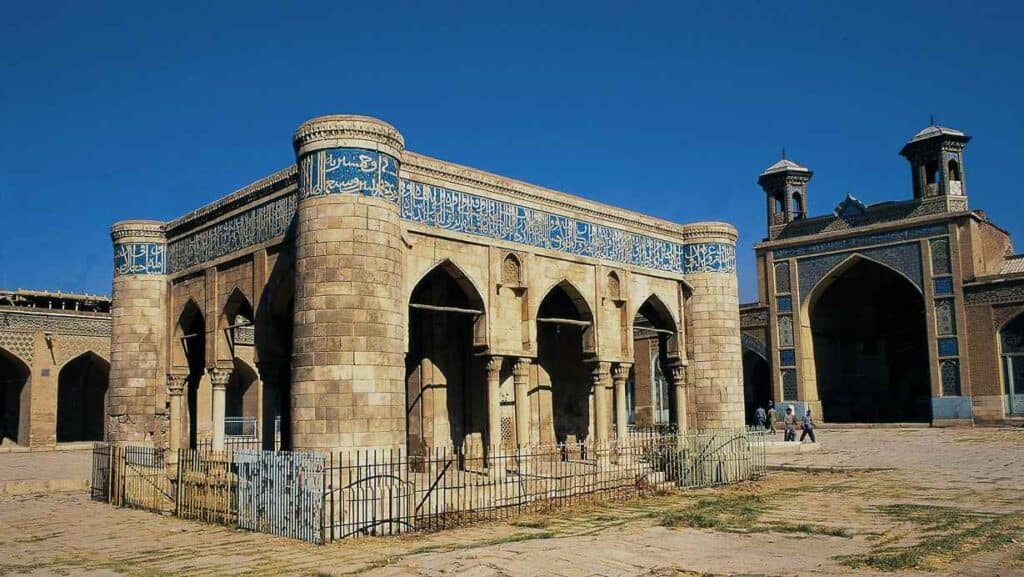
Opening hours: From morning till evening any time
Entrance fee: Free
10. Imamzadeh-ye Ali Ebn-e Hamze
Another Imamzadeh thatis the resting place of Emir Ali, a disciple of the 8th Shia Imam – boasts a majestic blue dome that overlooks the surrounding cemetery. The interior consists of high-ceilings and rather exquisite mirrored-tile work, typical of Iranian shrines. The central tomb is enclosed by a metal grill, which mourners will surround, touch, and even kiss. You must dress modestly for your visit. For that, they provide chadors for female visitors.
Opening hours: 08:00 – 18:00
Entrance fee: Free
11. Karim Khan Citadel
It was the royal residence of Karim Khan that looks like a medieval fort. During the 40-year rule of the Zand dynasty (1751-1794). The massive 3-meter-wide walls are reinforced with 14-meter-high circular brick towers at the corners. The royal residence served a military purpose too.
The entrance displays colorful mosaics. Later, during the Pahlavi dynasty, they converted it into a prison. The towers were the posts of guards, and the towering walls provided security. The inner courtyard had citrus trees and a pool.
The museum displays wax figures of Karim Khan and photographs of the royal scenes.
The citadel is more impressive from the outside and maybe disappointing from the inside. The number of displayed items is scarce. I suggest just to take a photo from the outside.
Opening hours: 09:00 20:00
Entrance fee: 200,000 Rials
12. Persepolis and Nagsh-e Rostam – a half day tour
Although they are approximately 60 km away, Persepolis and the Necropolis belong to the must-see sites once you are in Shiraz.
Persepolis was one of the capitals of the ancient Persian Empire. Darius I. probably used it for ceremonial purposes, and later his descendants, Xerxes and Artaxerxes I. extended it. The intricate reliefs cover the exterior of the palace and are a distinctive feature of Persepolis. They display Zoroastrian symbols, the pre-Islamic religion, and scenes from the festivities where people from every corner of the Empire gathered to express their gratitude to the king. The Pahlavi Shah organized a lavish celebration for the 2500th anniversary of the Persian Empire in 1971 in Persepolis. He built a whole tent city to welcome the kings and heads of states. The irrational luxury outraged the country where many lived in poverty. This event was decisive in the dethronement of the Pahlavi Shah in 1979.
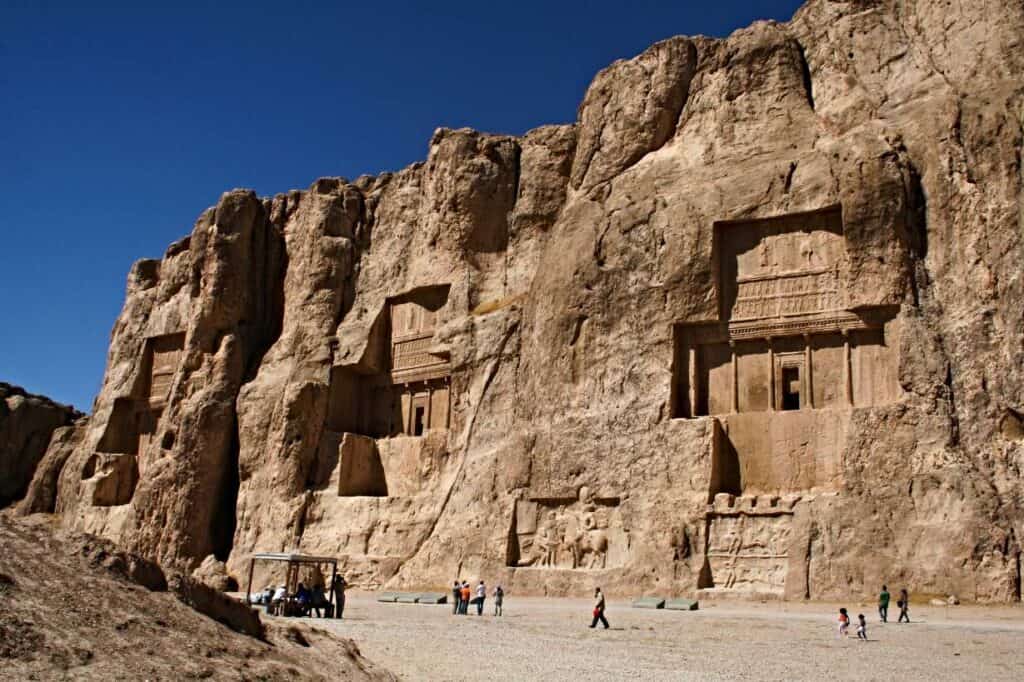
It is worth going with a guide, otherwise you will only see ruins and learn nothing about the significance of the Persian Empire and its architecture.
Some 12 km from Persepolis, you reach the royal tombs of the Achaemenid dynasty. Amazingly, the cross-shaped tombs were carved directly into the rock according to Zoroastrian traditions.
Opening hours: 08:00 am – 5:30 pm
Entrance fee: Persepolis 500,000 IRR (+200,000 IRR to the Pars museum), Nagsh-e Rostam: 200,000 IRR
What to taste in Shiraz?
Inarguably, the most famous specialty of Shiraz is the faloodeh. A cold dessert that is ideal in the hot summer. It is a combination of rice starch, iced rosewater and sugar, then finished with a touch of lemon juice.
Kalam Polo: cabbage with rice and tasty sauce
Ghanbar polo: meatballs fried with onion, walnuts, raisins and mixed with rice and pomegranate paste
Dopiyaze Aloo: One of the most popular dishes with an easy recipe (boiled potato, fried onion, tomato, and tomato paste).
Faloodeh of Shiraz: the most famous sweet of Shiraz
Masghati: a jelly-like sweet made mostly with starch, rose water, sugar, and water. Sometimes they add both saffron and turmeric.
Recommended daily tours from Shiraz
1. Visit Persepolis and Nagsh-e Rostam
2. Spend a day with the nomads and cook your food without electricity – top experience!!!
3. Go on a half-day tour to Persepolis, the ruins of the Ancient Persian Empire
4. Join a walking tour in Shiraz (street food, market and bazaar tour)
5. Go for a cooking class in Shiraz
6. Learn about the Persian poets and culture in the city of literature including a meal in a Persian home.
Check the prices and book your tour here
Recommended hotels in Shiraz
Raz traditional hotel Address: Lotfali Khan Zand St., Shiraz
Panj Dari traditional hotel Address: Haft Pich Alley, in front of Shahcheragh Public Parking, Shiraz
Parseh (3 stars) Address: 22 Bahman St., Shiraz
Karim Khan (4 stars) Address: Roudaki St., Shiraz
Zandieh (5 stars) Address: Hijrat Boulevard, Shiraz
Taha boutique hotel: unbelievably cheap private rooms
Sepehri Traditional house: private rooms and dormitories
How to plan your trip to Iran
Book your flight to Iran: I always use Google Flights, Skyscanner or Wayaway to find the cheapest flight tickets worldwide. To get an extra 10% for your Wayaway Membership Plus program use my discount code VOG
Important: Booking.com and other common platforms do not work due to international restrictions in Iran. The only exemption is Skyscanner, where you can book both your international flight and accommodation in Iran!
Book your accommodation in Iran: Hostelworld.com offers a limited number of hostels. All other services are only available through local travel agencies, like 1st Quest.
Get your visa to Iran: 1st Quest or Tap Persia local companies can easily arrange your insurance for Iran
Book domestic flights, hotels, transfers, bus and train tickets, and local tours, all in one place via 1st Quest travel agency.
Another good thing is that by using my discount code, you get an extra 5% off your bookings: VOG%1stQ
Virtual Private Network (VPN): Use VPNExpress, the fastest and best Virtual Private Network to get access to blocked sites in Iran and to prevent hackers from stealing your private information.
Insurance to Iran: 1st Quest or Tap Persia local companies can arrange for you visa to Iran
Book local guides and local tours: Pirsik is specialized in offering tour guides and local tours in less touristic countries, including Iran.
Recommended Restaurants in Shiraz
Kate Mas traditional restaurant Address: Taleghani St., Shiraz
Saray-e Mehr traditional restaurant Address: Vakil Bazaar, next to Sarai Moshir, Shiraz
Sufi Restaurant Address: Afif Abad St., Shiraz
Haft Khan Restaurant Address: The beginning of the 17th alley, the new Quran Boulevard, Shiraz
If you are only 2 weeks in Iran do not miss visiting Shiraz. It is also a good starting point to discover the southern coastal part of Iran. Shiraz is an easy-to-discover city without enormous distances and so much culture! Shiraz has everything that you envision about Persia. Have you been to Shiraz or planning a visit? Leave a comment if you have questions or share your experiences!

